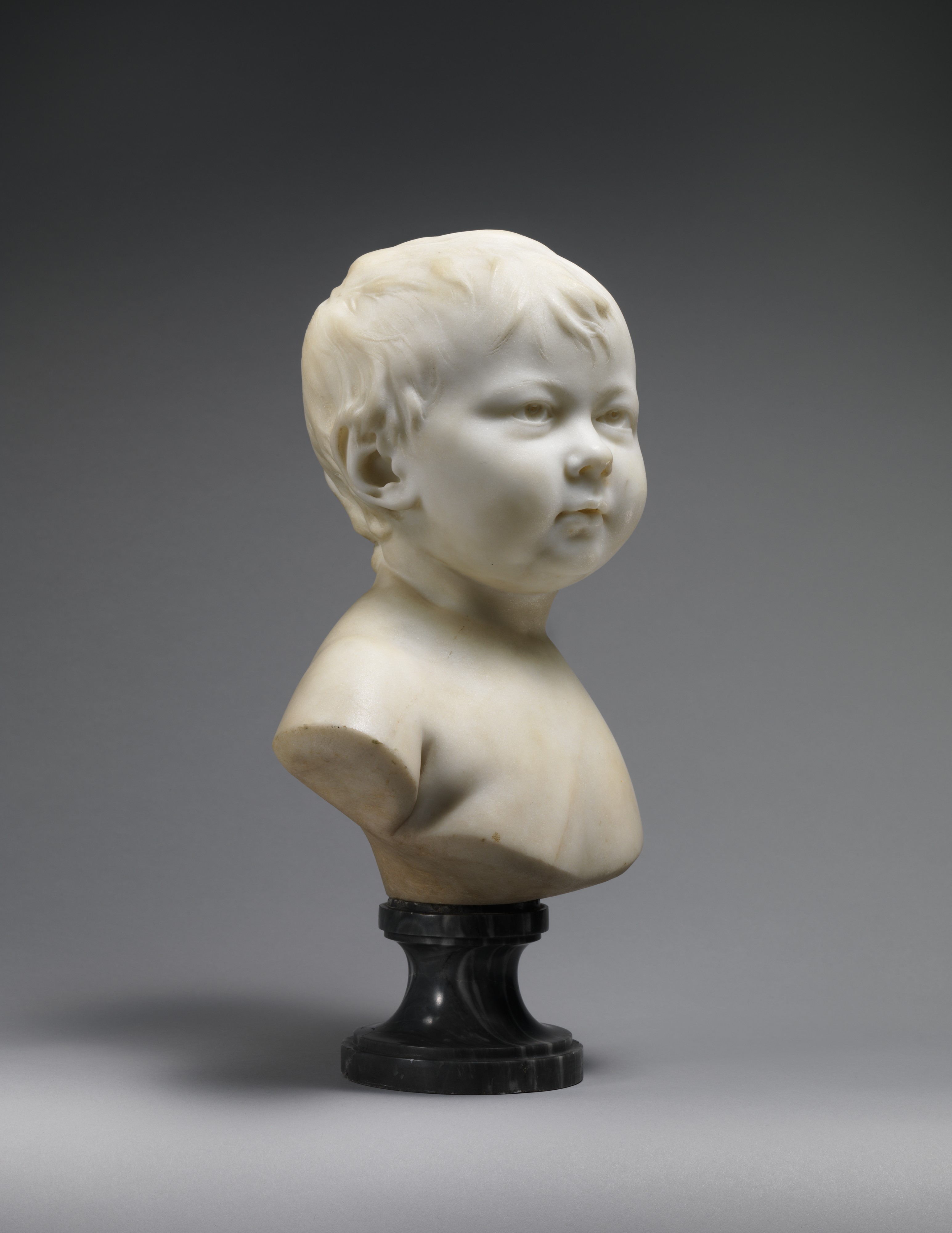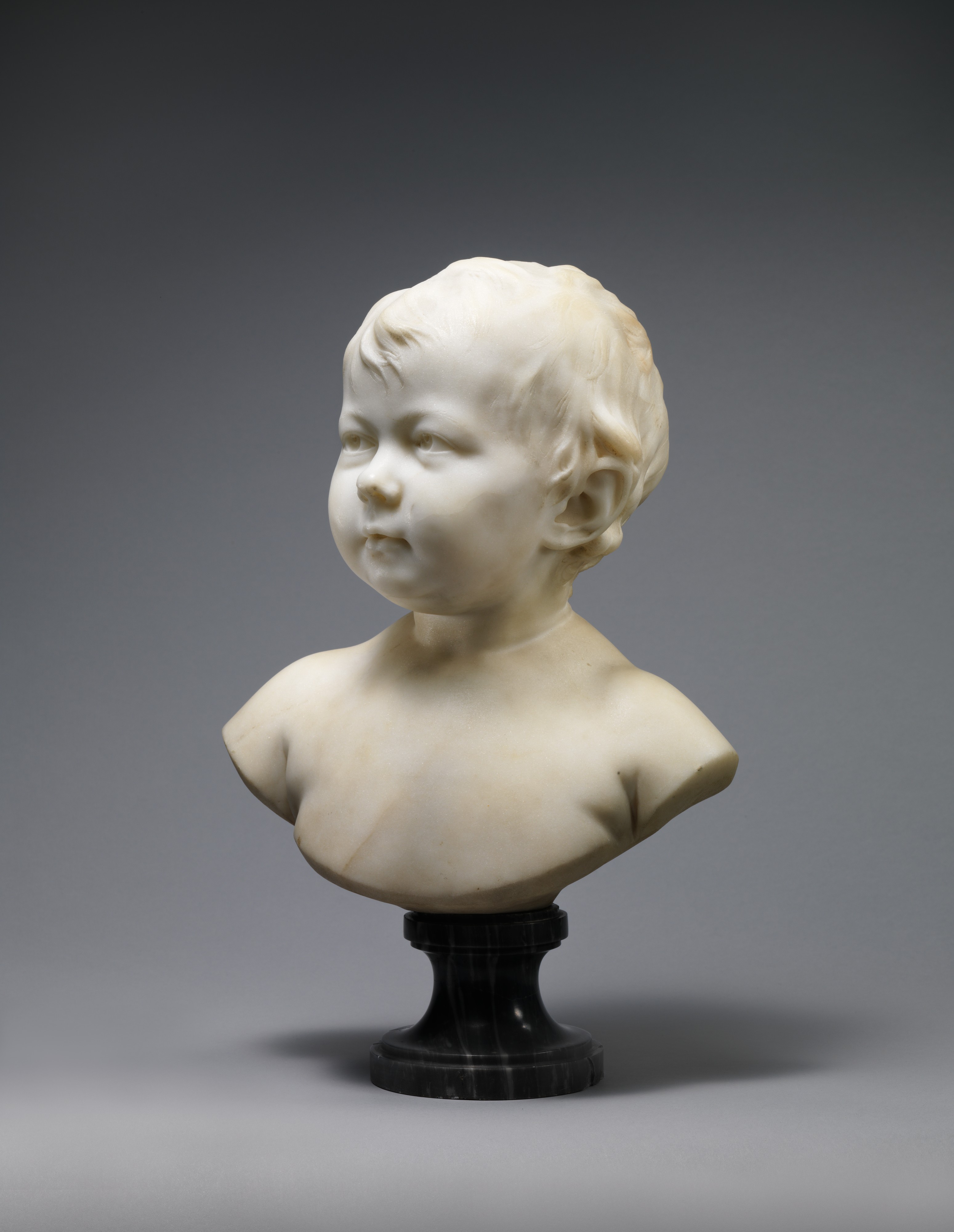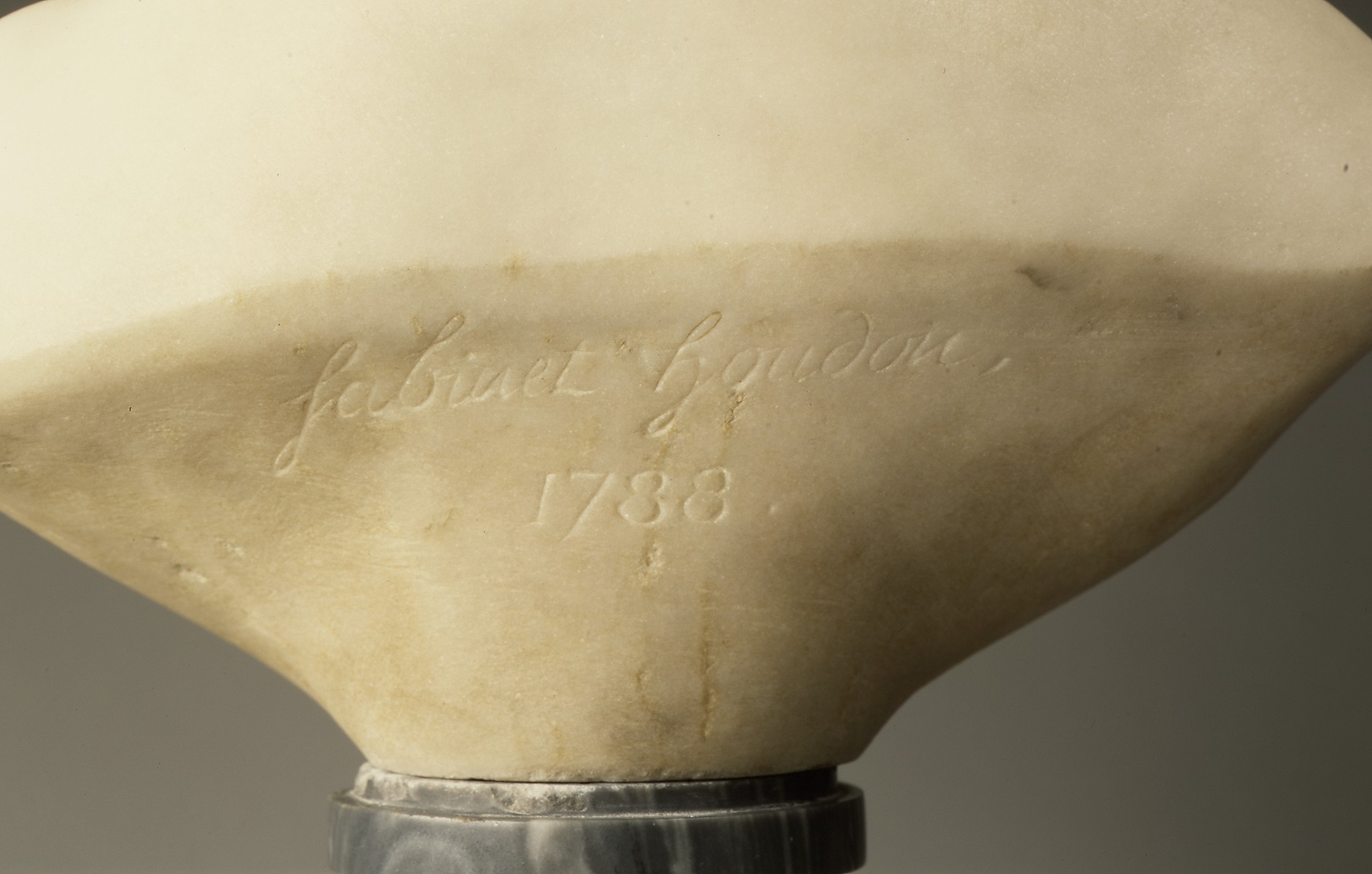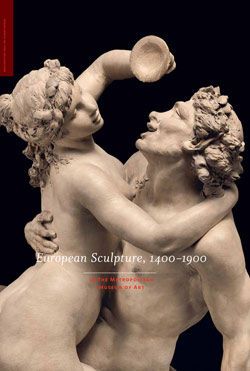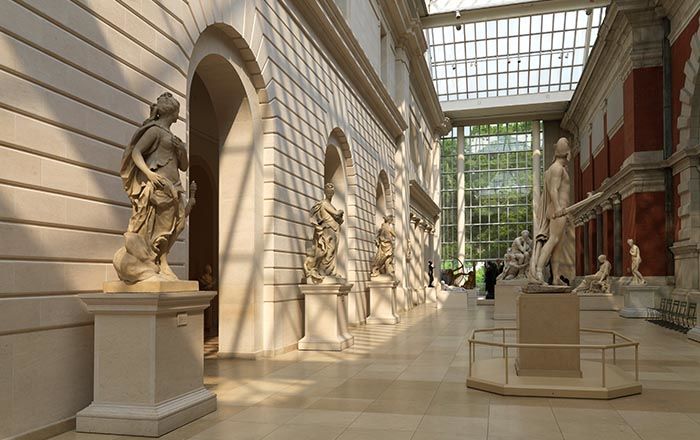Sabine Houdon (1787–1836)
Jean Antoine Houdon French
The great portrait sculptor jean-antoine houdon is well represented in this Museum by his busts of such French Enlightenment figures as Voltaire and Denis Diderot as well as of contemporary Americans such as Benjamin Franklin and Robert Fulton.[1] We also display some of his more personal likenesses of children: this one of his eldest daughter, Sabine, and two others of the daughters of friends, Louise Brongniart and Anne Audéoud.[2] Of the three, the bust of Sabine is the most tenderly realized. The artist lovingly rounded her pudgy cheeks, softened the tucks of baby flesh by her breast, and suggested the wisps of hair straggling over her forehead. The tiny, slightly puckered mouth and the flaps of the ear, appropriately oversized for a ten-month-old, are marvels of observation. At the same time, the angling of the head, the erect neck, and the sharp focus of the eyes give this child individuality.
Houdon entered this bust in the Salon of 1789 as "Head of a Child aged ten months," without identifying the sitter. It was, however, inscribed at the back "Sabinet," his nickname for Sabine (born February 25, 1787, died April 7, 1836); she kept the work throughout her life. [3] The original plaster, in the Louvre, does not bear that inscription. It seems only natural that Houdon should have protected the privacy of his child by leaving the bust untitled at its first showing. As Guilhem Scherf notes, sculptors rarely named the children whose portraits they submitted for exhibition at eighteenth-century salons.[4] In fact, at that time, it was extremely unusual to fashion portraits of children of such a tender age. The most famous precedent may be Jean-Baptiste Pigalle’s statuette of the one-year-old son of the banker Pâris de Montmartel, which was exhibited at the salon of 1750. [5] None of Houdon’s busts of his three children — there are multiple likenesses of Sabine, as well as of Anne-Ange (1788 – 1843) and Antoinette-Claude, called Claudine (1790 – 1878) — is named in Salon publications, with the exception of one showing the four-year-old Sabine (1791). Surely, Houdon’s busts of children were labors of love, yet it is also true that a number of plaster casts and terracottas of them issued from his workshop, and the anonymity of the subjects allowed him to capitalize on the contemporary taste for generalized "têtes d’enfants" by presenting them as representations of the innocence of childhood.[6]
Houdon made two other busts of Sabine, both when she was a four-year-old. One of them, known in a plaster version of 1791 (Louvre), shows her with a full head of hair. The other is distinguished by drapery encircling the child’s torso in the manner of ancient Roman busts (1791, private collection.). [7] Of all the likenesses the sculptor made of his three daughters, the Museum’s example remains the freshest in concept and impact, and despite the fact that the child is represented at the youngest age she is the most alert and defined in personality.
The bust remained in the Houdon family for more than a century. Thereafter, it has charmed nearly everyone who sees it, achieving an elevated place in the history of taste as reflected in the art market. When it was sold in 1928 at the New York auction of Judge Elbert H. Gary’s famed collection, it realized the highest price paid until that date for a sculpture at auction, $245,000. Through the agency of Knoedler and Company, the Museum’s patroness Mrs. Edward Harkness beat out the dealer Joseph Duveen, a rare feat. The bust of Sabine held that auction record for more than four decades.[8]
Footnotes
1. Voltaire (François Maríe Arouet, 1696 – 1778), 1778, marble, acc. no. 1972.61; Denis Diderot (1713 – 1784), 1773, marble, acc. no. 1974.291; Benjamin Franklin (1706 – 1790), 1778, marble, acc. no. 72.6; Robert Fulton (1765 – 1815), 1803 – 4, plaster, acc. no. 1989.329.
2. Louise Brongniart, 1779, marble, acc. no. 14.40.670; Anne Audéoud (1776 – 1840), first modeled ca. 1779 – 80, plaster, acc. no. 42.23.2.
3. Salon of 1789, Paris, no. 246: "Tête d’Enfant à l’âge de 10 mois," in the category of "Têtes en marbre de petite proportion" (Small marble heads). Sabine married Henry-Jean Pineu-Duval, an interior-ministry employee, in 1805, and had two children, one of whose children, Henri Perron, inherited the bust from his grandmother. See Réau 1950b, p. 180; see also Frick 1947, p. 208.
4. Guilhem Scherf in Portraits publics 2006, p. 166, no. 49.
5. Titled L’Enfant à la Cage (Child with a Cage), it is in the collection of the Musée du Louvre, Paris (R.F. 654).
6. Scherf in Portraits publics 2006, p. 166, no. 49, supports this point with a number of examples.
7. Scherf in Houdon 2003, pp. 133 – 40, nos. 17, 18; the author catalogues all the known busts Houdon made of his wife and children and records their various versions and casts.
8. "Gary Art Sale Sets Record" 1928; Freyberger 1969, p. 12.
This image cannot be enlarged, viewed at full screen, or downloaded.
This artwork is meant to be viewed from right to left. Scroll left to view more.


